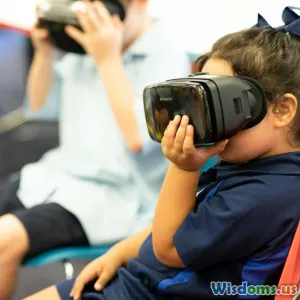
The Influence of Music on Language Learning
7 min read Explore how music shapes and accelerates language learning through engagement, memory, and culture. (0 Reviews)
The Influence of Music on Language Learning
Introduction
Imagine unlocking a new language effortlessly—where melodies guide your memory and rhythms shape your pronunciation. Music, a universal human experience, holds remarkable power beyond entertainment. It deeply influences how we absorb and process language. From the catchy tunes we hum as children to complex lyrics that challenge fluent speakers, music plays a transformative role in language learning. But how exactly does this happen? This article explores the fascinating intersection between music and language acquisition, revealing scientific insights, practical examples, and inspiring you to harness music as a strategic learning tool.
The Science Behind Music and Language Acquisition
Music Enhances Memory Retention
One of the most compelling reasons music aids language learning is its effect on memory. The brain processes music and language in overlapping neural networks. This overlap helps learners remember vocabulary, phrases, and grammatical structures more effectively when paired with melodies.
Research published in the Memory & Cognition Journal (Patel & Iversen, 2014) suggests that melodies provide a scaffold for encoding new words, improving recall by embedding language in rhythmic patterns. For instance, children worldwide often learn the alphabet through song, demonstrating this technique's power.
Rhythm and Pronunciation Synchronization
Rhythm in music aids in internalizing the natural prosody of language—the rise, fall, and rhythm of speech. When learners listen to and repeat songs, they implicitly grasp the flow and intonation of the target language.
An example is Spanish guitar music or French chanson, whose cadences help learners familiarize themselves with language-specific stress patterns. Emily Frisina, a linguistics professor at NYU, says, "Repeated exposure to musical rhythm enhances phonological awareness, which is fundamental for accurate pronunciation and listening comprehension."
Emotional Engagement and Motivation
Music evokes emotions, which are critical for motivation and long-term engagement with language learning. When learners enjoy the content, they are more likely to practice consistently.
A study from the University of Helsinki found students who integrated favorite songs into their study routines were 34% more motivated and showed improved listening skills compared to traditional study methods.
Practical Benefits of Using Music in Language Learning
Building Vocabulary Through Lyrics
Song lyrics are a treasure trove of authentic language, including slang, idioms, cultural references, and current vocabulary. Learners encountering songs by artists like Shakira in Spanish or Stromae in French gain exposure to everyday expressions in a natural context.
For example, the song "La Vie en Rose" by Édith Piaf offers poetic phrases to learn French descriptive language, while "Despacito" exposes learners to conversational Spanish with a catchy hook reinforcing repetitive vocabulary.
Improving Listening Comprehension
Language acquisition thrives on listening skills, and music provides diverse acoustic input. Songs often use repetition which aids understanding and prediction of language patterns.
Techniques such as lyric gap-fill exercises challenge learners to engage actively rather than passively listen. Apps like Lyricstraining.com gamify this process, showing measurable improvements in learners’ abilities to catch spoken words in foreign languages.
Encouraging Speaking Through Singing
Singing along creates a low-pressure environment to practice pronunciation and fluency, reducing anxiety often associated with speaking practice.
Claire Thompson, a polyglot and language coach, emphasizes, "Singing aloud familiar songs helps learners overcome self-consciousness and internalizes sentence structures rhythmically and memorably."
Real-World Insights and Success Stories
Case Study: The Finnish Approach
Finnish language schools incorporate K-pop and local pop music into curriculum to engage young learners. Teachers report increased classroom participation and retention rates. By connecting language learning with a hobby, students dedicate more time outside school exploring vocabulary embedded in tracks.
Celebrity Language Learners Using Music
Actors like Joseph Gordon-Levitt have highlighted using music when learning Japanese, replicating lyrics to perfect their accent. Similarly, many celebrity polyglots credit musical immersion for rapid progress.
Tech-Enabled Music Language Learning
Technology now melds music and language learning seamlessly. Platforms offering customizable playlists, interactive subtitles, and karaoke modes enable tailored experiences. Spotify’s dedicated language learners’ playlists curate songs with easy vocabulary and slow originals.
How to Effectively Incorporate Music into Your Language Learning
- Choose Suitable Music: Pick songs within your language level. Start with simple lyrics, progressively increase complexity.
- Active Listening: Follow lyrics, translate unfamiliar words, and note cultural references.
- Sing Along: Practice pronunciation and rhythm by singing.
- Use Technology: Leverage apps that provide interactive listening exercises.
- Balance with Formal Study: Complement musical input with grammar and speaking practice.
Conclusion
Music offers a dynamic pathway to mastering new languages, merging cognitive benefits with emotional motivation. Its rhythms and melodies not only aid memory retention but embed learners in authentic cultural context, enrich vocabulary, and perfect pronunciation. Whether you are a beginner or an advanced language learner, integrating music into your routine can transform the often-daunting experience of learning a new language into an enjoyable and powerful journey.
So next time you embark on learning a language, consider tuning into your favorite songs. Let the music guide your words and accelerate your fluency with joy and rhythm.
References:
- Patel, A. D., & Iversen, J. R. (2014). Memory & Cognition Journal
- University of Helsinki Study on Music and Motivation in Language Learning
- Interviews with Emily Frisina, Claire Thompson
Rate the Post
User Reviews
Popular Posts



















